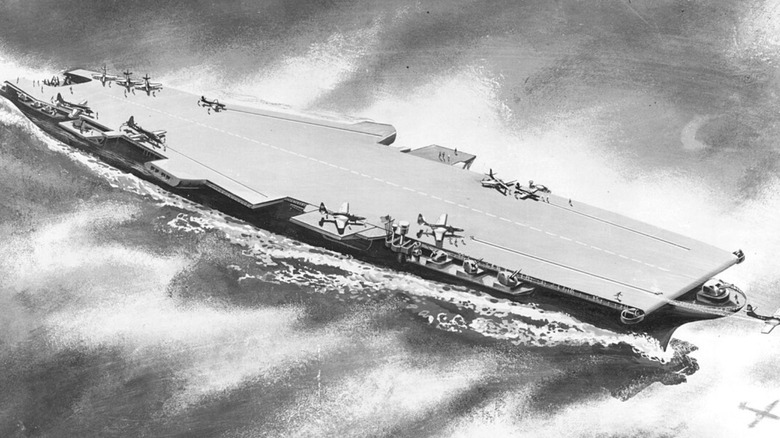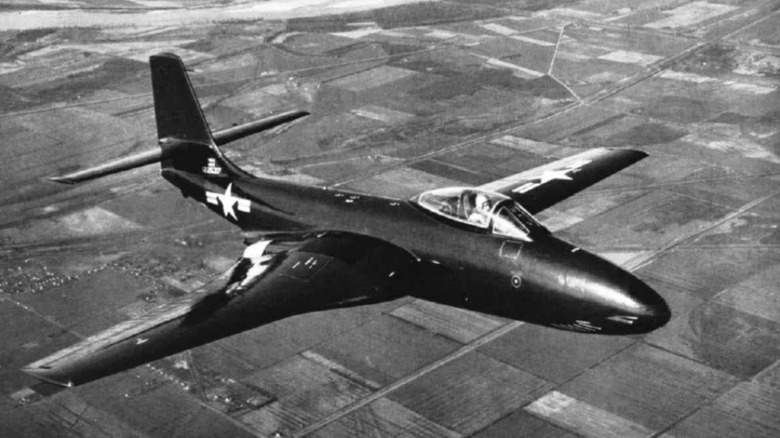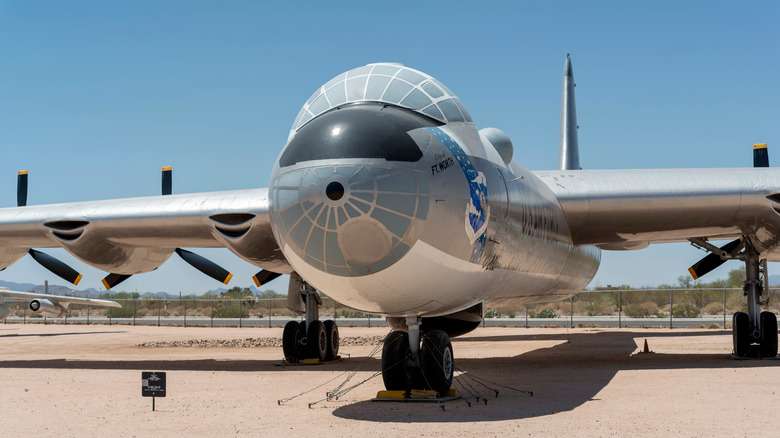USS United States: All About The US Navy's Canceled Nuclear Supercarrier
The United States is the world leader in aircraft carriers, boasting a total of 20 different vessels of the kind. These are the largest military ships on the planet, and the development of an aircraft carrier is a long and complex process. Sometimes, efforts on this scale just don't work out, including one project called the USS United States.
The idea for the USS United States was first conceived in the wake of World War II. At the time, many governments were looking for new offensive and defensive resources to stock up on in the case that another conflict of that devastating scale would sweep the globe. The U.S. had a lot of aircraft carriers during World War II, and some early iterations did have the capacity for large planes to land on aircraft carriers, though this was not a routine occurrence.
The USS United States, however, was specifically designed to carry large bombers and nuclear weapons. Although this is certainly possible with today's aircraft carriers, it was a rather radical idea when it was proposed more than 70 years ago. In fact, it may have been a bit too far ahead of its time, as the project ran into some pitfalls and ultimately didn't pan out.
The USS United States could have expanded the Navy's capabilities at sea
When the USS United States was under development in the late 1940s, nuclear weapons weighed around five tons each. This meant that bombers capable of carrying them had to be huge, as in turn did the carriers that were expected to bear their weight during operations. Space-wise, the idea was to eliminate the characteristic raised structure of a carrier and instead dedicate all of its real estate to serve as one large, flat flight deck. This would have been a gigantic vessel that displaced 79,000 tons, stretched 1,088 feet long, and could hold 18 ADR-42 bombers and 80 F2H-1 "Banshee" fighter jets (pictured here).
There were issues inherent with this unprecedented design, however, such as the carrier's reliance on support from other vessels: Without its tower, it lacked room to mount equipment such as a radar and would require a protective entourage. The plan was for more conventional aircraft carriers of the Essex and Midway classes to protect the USS United States while it launched bombers from its deck. There was certainly a lot of potential to the idea, and construction of the first vessel began in April 1949. Less than a week later, however, the program suddenly ended.
The USS United States was canceled due to budget concerns
The USS United States class (proposed to be a group of four vessels) was shaping up to be a valuable asset to the U.S. Navy. This created friction within branches of the military, however. The prior year, the U.S. Air Force had just introduced the massive 10-engine Convair B-36 strategic bomber (pictured here). Unfortunately, there was only so much money to go around, and the tremendous costs of developing a new class of aircraft carriers could have shifted focus from the B-36.
The National Museum of the United States Air Force notes that the B-36 was created from the "U.S. Army Air Forces' requirement for a strategic bomber with intercontinental range," which is precisely the sort of role that the bombers of the USS United States carriers would have fulfilled. In April 1949, necessary budget cuts (along with concerns regarding long-term practicality and tensions between departments about the carrier and its potential impact) caused then-Secretary of Defense Louis Johnson to order the immediate cancelation of the USS United States class. At the time, their development would have cost the U.S. government more than $1.2 billion, which is equivalent to more than $16 billion in today's dollars.


